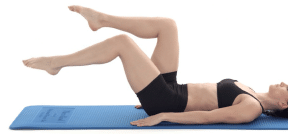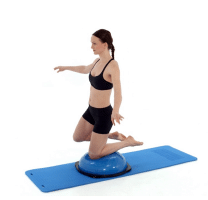The core is a very popular topic in the fitness and rehab industry, and for good reason. The core is the deepest set of muscles in your body which work to stabilize your centre and hold you up against gravity. Some attach to the front and back of the body (trans abs/internal obliques) via long broad sheet like tendons and fascia which possess enormous tensile strength. Others attach directly to the spine (multifidus), pelvic bowl (pelvic floor) or ribs (diaphragm).
These muscles are tonic muscles, anti-gravity muscles, constantly working in the background to hold you upright in space and anticipate movement. You need the constant coordinated action of these tonic muscles to maintain good spinal posture and joint alignment.
When we perform voluntary movement like lifting our arms, a sequence of postural adjustments occur prior to the movement (Bouisette 1981). This action creates a stable platform for the large phasic muscles to generate force upon and move us through space. Without this anticipatory stabilization, misalignment and postural failures develop. This puts excessive stress through certain segments leading to joint and tissue deterioration (arthritis,disc herniations or tendinitis). It has been shown that a delayed muscle reflex response of these tonic muscles increases the odds of sustaining a low back injury (De Blaiser 2018). This
in part is due to core muscles failing to react.
When the system destabilizes, the larger phasic muscles stop moving the limbs to help stabilize the spine. Their big movement arms pull associated joints into misaligned positions which increase torque and sheering forces. This can be a slow breakdown of joint cartilage, tendons or spinal discs over time, or sudden tissue ruptures and tears. This helps explain how healthy individuals with impaired core stability can development injuries (Hubscher 2010).
So how do we train the core? Because the nature of the core is to stabilize by responding to outside forces and anticipating movement; the prescribed exercises will mimic its function.
1) Training the anticipation of movement and to
reflexively activate prior to any movement
occurring.

2) Train the response mechanism to outside forces and
ones ability to remain upright against them.

I think we can see how important the core is now and why it remains a popular topic.
At Deep, we have built programs around educating individuals on the anatomy of the core and how to access it for injury prevention and treatment. If you want to learn more, we offer our 4 on 1 Intro Core Pod sessions and a weekly Beginner Core Class. Our goal is to help create and maintain a stable platform for you to move on each day.
Are you living in pain? Click this link to book an initial assessment with one of our Physiotherapists! https://deepphysio.janeapp.com/
Reference List
– Bouisset, S., Zattara, M., 1981. A sequence of postural adjustments precedes voluntary
movement. Neuroscience Letters. 22, 263.
– De Blaiser, C., Rossen, P., Willems, T., Danneels, L., Vanden Bossche, L., De Ridder, R.,
2018. Is core stability a risk factor for lower extremity injuries in athletic population? A
systematic review. 30, 48.
– Hubscher, M., Zech, Astrid., Pfeifer, K., Hansel, Frank., Vogt, L., Winfried, B., 2010.
Neuromuscular training for sports injury prevention: a systematic review. 42, 413


